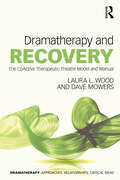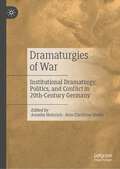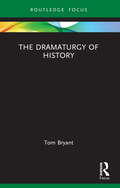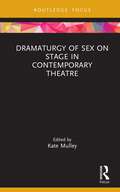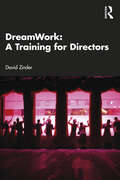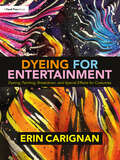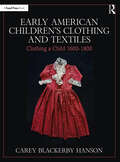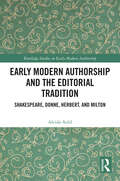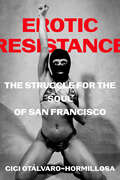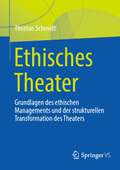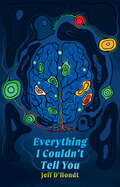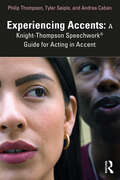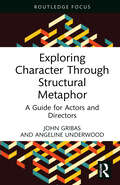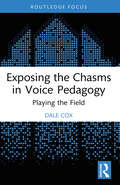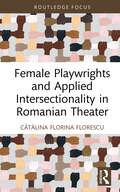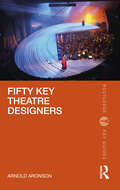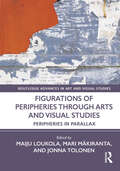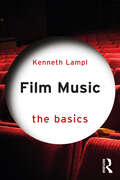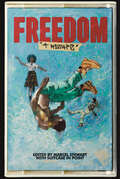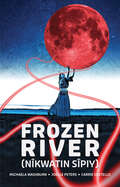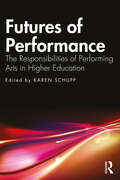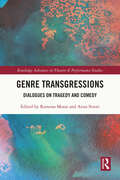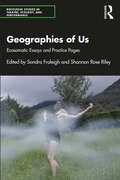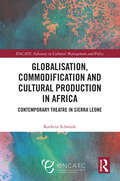- Table View
- List View
Dramatherapy and Recovery: The CoActive Therapeutic Theatre Model and Manual (ISSN)
by Laura L. Wood Dave MowersDramatherapy and Recovery offers a comprehensive and groundbreaking approach to harnessing the power of theater in the recovery process through the use of playmaking and performance.This manual is based on the CoActive Therapeutic Theater (CoATT) model, the first of its kind to be meticulously documented and standardized. With its emphasis on replicability and measurable outcomes, the CoATT model is brought to life through annotated scripts and progress notes extracted from past productions involving diverse populations, including those with eating disorders, aphasia, schizophrenia, and substance abuse disorder. The authors illuminate the six principles that distinguish CoATT from other therapeutic and applied theater approaches. The chapters provide a structured framework compromising seven defined movements that act as attainable milestones for participants guided towards producing a powerful and transformative public performance.Dramatherapy and Recovery equips practitioners of dramatherapy, counseling arts in health, applied theater, community theater, and other mental health disciplines with the tools needed to create transformative performances with individuals reconnecting with the community after treatment.
Dramaturgies of War: Institutional Dramaturgy, Politics, and Conflict in 20th-Century Germany
by Anselm Heinrich Ann-Christine SimkeThis book examines the institutional contexts of dramaturgical practices in the changing political landscape of 20th century Germany. Through wide-ranging case studies, it discusses the way in which operationalised modes of action, legal frameworks and an established profession have shaped dramaturgical practice and thus links to current debates around the “institutional turn” in theatre and performance studies. German theatre represents a rich and well-chosen field as it is here where the role of the dramaturg was first created and where dramaturgy played a significantly politicised role in the changing political systems of the 20th century. The volume represents an important addition to a growing field of work on dramaturgy by contributing to a historical contextualisation of current practice. In doing so, it understands dramaturgy not only as a process which occurs in rehearsal rooms and writers’ studies, but one that has far wider institutional and political implications.
The Dramaturgy of History (Focus on Dramaturgy)
by Tom BryantIn this book, dramaturg Tom Bryant shares with readers and writers his insights into the process of historical adaptation. The book uses case studies from Bryant's collaborations with playwrights on successful Broadway and regional productions to work through the fundamental questions of historical adaptation: Why do you want to adapt history? For what purpose? What is your approach? How does that approach affect the portrayal of events? How does that choice by the playwright and the dramaturg then determine the framing and focus in the story, the selection of the key events and the choice of characters? What is the meaning you want the audience to take away from the events? How is your adaptation of past events relevant to contemporary times? In addition, the author explores the moral and ethical responsibilities involved for the dramaturg and the playwright in the adaptation of history and how issues of diversity, equity and inclusion impact the presentation of historical material. This is an indispensable resource for anyone whose craft brings them to the task of adapting historical material for the stage—in postgraduate work, teaching or professional practice.
Dramaturgy of Sex on Stage in Contemporary Theatre (Focus on Dramaturgy)
by Kate MulleyDramaturgy of Sex on Stage in Contemporary Theatre explores the dramaturgy of sex in contemporary works for the stage in the social, cultural and historical context of the time and place during which they were written and performed. Comprising chapters by writers from across North America and Europe, the book covers an expansive range of plays, musicals and dance performances, from Broadway to the Fringe, from post-AIDS epidemic to post-COVID-19 pandemic. Analysing these intimate moments—both textually and as staged—through an intersectional and critical lens illuminates the way power structures are maintained and codified, and how they can be queered and dismantled onstage and off. This examination of depictions of sex on stage attempts to understand from a dramaturgical and sociological perspective how these depictions have developed over time, and how the rise of intimacy directors has responded to the changes within the contemporary theatrical landscape and in the world at large. This is an essential companion for any scholar or practitioner looking to stage, discuss or understand intimacy in performance.
DreamWork: A Training for Directors
by David ZinderDreamWork: A Training for Directors provides a theoretical basis and a highly detailed, practical, step-by-step blueprint for developing a directorial concept for a play.Directing is a complex, multi-staged artistic process which, for the most part, is a collaborative work of art. The director works with designers, composers, choreographers and actors to create the performance that is eventually shown to an audience. In this process, there is one stage of the director’s work which is uniquely personal and individual: the creation of a directorial concept. This book concentrates on this crucial stage of the director’s work, offering a template for the creation of a directorial concept prior to embarking on the collaborative stage of the director’s work. The book follows the process from the choice of the text, through a series of clearly documented and structured sets of strategies with attendant examples, up to the creation of the director’s version of the original play - the adaptation - that is the starting point for the director’s dialogue with designers, composers, choreographers and actors.DreamWork: A Training for Directors is intended for directing students at universities or theatre academies, both at undergraduate and graduate levels, as well as directors at the beginning of their careers.
Dyeing for Entertainment: Dyeing, Painting, Breakdown, and Special Effects for Costumes
by Erin CarignanDyeing for Entertainment encompasses a wide range of methods of theatrical painting and dyeing to create beautiful artistic products for theatre, film, TV, opera, and themed entertainment. Featuring examples from renowned international artisans in the field, this book provides a wealth of information on creating and changing colors, prints, and surface textures of fabric using traditional and nontraditional costume, scenic, fine-art, and metal-smithing techniques. It also includes new, safer materials and methods to minimize exposure to toxic materials and fumes. With more than 250 full-color images, this technical manual is designed to guide and inspire new artists in the collaborative art of painting, dyeing, ageing, and slinging blood and bling on costumes that is an essential part of creating characters for the entertainment industry. Written for undergraduate and graduate students of costume design and technology, professional dyers and breakdown artists, and cosplayers, this book can be used as a reference and springboard to create your own magical processes, custom fabrics, and unforgettable costumes. To access the online materials, including printable swatch sheets, a collection of relevant safety data sheets, and a source guide with links, visit www.routledge.com/9780815352327.
Early American Children’s Clothing and Textiles: Clothing a Child 1600-1800
by Carey Blackerby HansonEarly American Children’s Clothing and Textiles: Clothing a Child 1600–1800 explores the life experiences of Indigenous, Anglo-European, African, and mixed-race children in colonial America, their connections to textile production, the process of textile production, the textiles created, and the clothing they wore. The book examines the communities and social structure of early America, the progression of the colonial textile industry, and the politics surrounding textile production beginning in the 1600's, with particular focus on the tasks children were given in the development of the American textile industry. The book discusses the concept of childhood in society during this time, together with documented stories of individual children. The discussion of early American childhood and textile production is followed by extant clothing samples for both boys and girls, ranging from Upper-class children's wear to children's wear of those with more humble means. With over 180 illustrations, the book includes images of textile production tools, inventions, and practices, extant textile samples, period portraits of children, and handmade extant clothing items worn by children during this time period. Early American Children’s Clothing and Textiles: Clothing a Child 1600–1800 will be of interest to working costume designers and technicians looking for primary historical and visual information for Early American productions, costume design historians, early American historians, students of costume design, and historical re-enactment costume designers, technicians, and hobbyists.
Early Modern Authorship and the Editorial Tradition: Shakespeare, Donne, Herbert, and Milton (Routledge Studies in Early Modern Authorship)
by Aleida AuldThis volume adds a new dimension to authorship studies by linking the editorial tradition to the transformative reception of early modern authors and their works across time. Aleida Auld argues that the editorial tradition provides privileged access to the reception of early modern literature, informing our understanding of certain reconfigurations and sometimes helping to produce them between their time and our own. At stake are reconfigurations of oeuvre and authorship, the relationship between the author and work, the relationship between authors, and the author’s own role in establishing an editorial tradition. Ultimately, this study recognizes that the editorial tradition is a stabilizing force while asserting that it may also be a source of strange and provocative reconceptions of early modern authors and their works in the present day. Scholars and students of early modern literature will benefit from this approach to editing as a form of reception that encompasses all the editorial decisions that are necessary to ‘put forth’ a text.
Erotic Resistance: The Struggle for the Soul of San Francisco
by Gigi Otalvaro-HormillosaErotic Resistance celebrates the erotic performance cultures that have shaped San Francisco. It preserves the memory of the city's bohemian past and its essential role in the development of American adult entertainment by highlighting the contributions of women of color, queer women, and trans women who were instrumental in the city's labor history, as well as its LGBT and sex workers' rights movements. In the 1960s, topless entertainment became legal in the city for the first time in the US, though cross-dressing continued to be criminalized. In the 1990s, stripper-artist-activists led the first successful class action lawsuits and efforts to unionize. Gigi Otálvaro-Hormillosa uses visual and performance analysis, historiography, and ethnographic research, including participant observation as both performer and spectator and interviews with legendary burlesquers and strippers, to share this remarkable story.
Ethisches Theater: Grundlagen des ethischen Managements und der strukturellen Transformation des Theaters
by Thomas SchmidtMit dem Konzept des Ethischen Theaters wird ein ganzheitliches Zukunftsmodell vorgestellt. Ausgangspunkt ist die Analyse der gegenwärtigen Krisen und der Komplexität in den deutschsprachigen Theatern, um die Grundlagen für ihren Transformationsprozess zu entwickeln. Mit dem Ethischen Theater wird ein Ziel dieses Prozesses vorgestellt: das ganzheitliches Zukunftsmodell einer Theater-Organisation des 21. Jahrhunderts, in der ethische Überlegungen erstmals in allen Prozessen handlungsleitend sind. Das Modell ist kompatibel mit den Interessen der Stakeholder und den wichtigen Reformprozessen, es ermöglicht die anstehende strukturelle Modernisierung der Theaterbetriebe. Unterstützt wird es durch das Konzept des Ethischen Theatermanagements, das erstmals über die klassischen Funktionen hinaus auch Aspekte der Diversität, der Nachhaltigkeit, der Ethik und der Zukunftsfähigkeit adressiert. Mit den erweiterten Funktionen des ethischen Managements werden auch weitere Möglichkeitsräume für die Zukunft der Kultur-Organisationen eröffnet.
Everything I Couldn't Tell You
by Jeff D'HondtRevived from a coma after a traumatic event, Megan’s injuries leave her capable of great violence, forcing her desperate physician Cassandra to recruit Alison, an Indigenous clinician, as her consultant. Alison uses an innovative form of technologically enhanced expressive arts therapy to augment the rehabilitative effects of speaking Lenape, their shared (and almost extinct) language. However, this reminder of cultural expression and identity triggers Megan, putting herself into a life-threatening situation. With Megan’s safety in jeopardy, Alison must internalize a life-changing lesson to save her: pain is often unjust, but it also reminds us that we’re alive.Everything I Couldn’t Tell You is a potent reminder of the healing and rehabilitative power within Indigenous languages.
Experiencing Accents: A Knight-Thompson Speechwork® Guide for Acting in Accent
by Philip Thompson Tyler Seiple Andrea CabanExperiencing Accents: A Knight-Thompson Speechwork® Guide for Acting in Accent presents a comprehensive and systematic approach to accent acquisition for actors. It lays out an accessible and effective set of tools, exercises, and theoretical frameworks grounded in current linguistic science, as well as more than two decades of teaching, actor training, and coaching developed by Knight-Thompson Speechwork®. This book dismantles the notions that accents exist on a spectrum of good and bad or that "neutral," "general," or "standard" can serve as ideals for speech. By de-centering elitist and authoritarian worldviews, it gives actors a path to mobilize their innate language abilities to acquire any accent, relying on descriptive and experiential knowledge. The innovative approach of the Four Ps – People, Prosody, Posture, and Pronunciation – builds cultural competence that honors accents as they exist in the world, increases the physical and perceptive skills of the actor, and provides a rich variety of applications to encourage fluid and embodied accent performance. Each of the Four Ps are investigated and practiced separately and then synthesized in the art of the performer, allowing actors to address the complexity of acting in accent through a deliberate and sequential layering of skills, rendering the final expression of their technique meticulously accurate and deeply authentic. Organized into fifteen modules to correspond with a typical semester, Experiencing Accents is perfect for Theatre students in voice, speech, and accents courses, along with working actors interested in improving their accent work.
Exploring Character Through Structural Metaphor: A Guide for Actors and Directors (ISSN)
by John Gribas Angeline UnderwoodExploring Character Through Structural Metaphor will help performers discover new and valuable insights into the characters they play. Grounded in a contemporary approach to understanding and applying the power of metaphor, it offers a practical guide for both actors and directors. This book introduces the idea of metaphor as a way of thinking rather than simply as clever comparison or figurative language. It demonstrates limitations of ways metaphor has traditionally been used in character development and presents a method for applying structural metaphor to discover rich, in-depth character insights. For directors, the model can serve as an option for guiding character analysis that is less individualistic and actor-specific and more wholistic and cast-inclusive, promoting stronger overall performance unity and production cohesion. In addition to offering a clear, followable guide for character analysis, the authors draw on personal experience to vividly demonstrate how applying this method for character analysis could impact performance and production. This book will be a useful addition to an actor’s or director’s set of character development resources.
Exposing the Chasms in Voice Pedagogy: Playing the Field
by Dale CoxThis concise book critically examines the intersection of power, privilege, and classical music in higher education through an extensive study of the experiences, training, and background of teachers of musical theatre singing.Mapping the divides within the voice pedagogy field, it shows how despite the growth of non-classical programmes, the teaching of vocal music in the United States continues to be structurally dominated by Western classical music. Drawing on extensive fieldwork and observations of practicing instructors, the author argues that current voice pedagogy training’s classical-centred approach fails to prepare instructors to teach the range of vocal styles needed in the contemporary musical theatre profession. Combining a critical review of existing practices with proposals for change, this book sheds light on a key problem in voice pedagogy today.Based on field research and drawing on both Shulman’s signature pedagogies theory and Bourdieu’s concepts of habitus, capitals, practice, and field, this book will be useful for scholars, researchers, and practitioners of voice pedagogy, higher music education, performance education, cultural studies, music, musical theatre, and theatre studies.
Female Playwrights and Applied Intersectionality in Romanian Theater (Routledge Advances in Theatre & Performance Studies)
by Cătălina Florina FlorescuIn this collection, the author focuses on several contemporary Romanian female playwrights with residencies in Europe and the U.S.: Alexandra Badea, Carmen Francesca Banciu, Alexa Băcanu, Ana Sorina Corneanu, Mihaela Drăgan, Dr. Cătălina Florina Florescu, Dr. Mihaela Michailov, Dr. Domnica Rădulescu, Saviana Stănescu, and Dr. Elise Wilk. In their bold works, written by female playwrights who are academics, activists, and performers, we are invited to discover variations in the modus operandi of the dramatic language itself from metaphorical to matter-of-fact approaches. Furthermore, while all these playwrights speak Romanian, they also think and operate in various other languages, such as Romani, German, French, Italian, and American English. This book facilitates scholars and students to discover contemporary issues related to Romanian society as presented heavily from a feminine angle and to reveal intersectional issues as seen and applied to dramatic characters in a post-communist country from some authors who experienced communism firsthand. The book is also an invitation to reinvent how we teach dramatic literature by offering 20 interactive, exploratory activities.
Fifty Key Theatre Designers (Routledge Key Guides)
by Arnold AronsonFifty Key Theatre Designers looks at the history of theatrical scenography by examining the work and contributions of fifty ground-breaking set, costume, lighting, and projection designers since the Renaissance. Developments of scenic design are traced from the introduction of perspective painting to create illusionistic scenery in Renaissance Italy to the use of digital projection in the twenty-first century. The book also discusses important landmarks in the evolution of costume and lighting design, as well as the introduction of film and video technology to stage design. A broad range of work is explored, including opera, dance, Broadway and West End commercial theatre, avant-garde performance, and even Olympic spectacles. Each chapter features one designer, including basic biographical information and a discussion of that artist’s style, aesthetics, and contributions. Designers covered include Sebastiano Serlio, Ferdinando Bibiena, Richard Wagner, Adolphe Appia, and Edward Gordon Craig, amongst many other notable individuals. Each chapter also includes references to other significant designers with similar aesthetics or who made similarly important contributions to the development of that aspect of scenography. This book is ideal for undergraduates and graduates of scenography, theatrical design, and theatre history.
Figurations of Peripheries Through Arts and Visual Studies: Peripheries in Parallax (Routledge Advances in Art and Visual Studies)
by Maiju Loukola Mari Mäkiranta Jonna TolonenThis edited volume breaks new ground for understanding peripheries and peripherality by providing a multidisciplinary cross-exposure through a collection of chapters and visual essays by researchers and artists. The book is a collection of approaches from several disciplines where the spatial, conceptual, and theoretical hierarchies and biased assumptions of ‘peripheries’ are challenged. Chapters provide a diverse collection of viewpoints, analyses, and provocations on ‘peripherality’ through bringing together international specialists to discuss the socio-political, aesthetic, artistic, ethical, and legal implications of ‘peripheral approach.’ The aim is to illuminate the existing, hidden, often incommensurable, and controversial margins in the society at large from equal, ethical, and empathic perspectives. The book is designed to assist established researchers, academics, and students across disciplines who wish to incorporate novel, arts and practice-based research and critical approaches in their research projects, artwork, and academic writing. Providing both a consolidated understanding of the peripheries, visual studies, and artistic research as they are and setting expansive and new research insights and practices, this book is essential reading for scholars of arts and humanities, visual culture, art history, design, philosophy, and cultural studies.
Film Music: The Basics (The Basics)
by Kenneth LamplA comprehensive introduction to film music, this book provides a concise and illuminating summary of the process of film scoring, as well as a succinct overview of the rich history of contemporary film music. Written in a non-technical style, this book begins by presenting a brief history of film music from the last 30 years, covering topics ranging from blockbuster franchises to indie film scores. It explores film music from around the world, including Bollywood and European Avant-garde cinema, and film music in animation, like Disney-Pixar and Japanese anime. It then offers a guide to the language of film music analysis, the creative process behind composing film music, and the use of current technology. The book champions diversity in the industry, with case studies and interviews from a range of active film composers, including: Pinar Toprak (Captain Marvel, 2019), Kris Bowers (Bridgerton, 2020), Natalie Holt (Loki, 2021), and Rachel Portman (Emma, 1996), Complete with a glossary of key terms and further reading, this book is an invaluable resource for all those beginning to study film music, as well as lifelong film music buffs seeking to update their understanding of film music.
Freedom: A Mixtape
by Marcel Stewart with Suitcase In PointFreedom: A Mixtape is a soulful artistic response to recent and historical violence on Black bodies, presented through a collection of original songs, stories, poems, anecdotes, spoken-word pieces, and musical instrumentation from folks living in Ontario's Niagara Region. A community conversation about our complicated relationship with emancipation and the human right to be free, Freedom: A Mixtape is a compilation album that is part protest and part celebration. It is history and the present moment all at once, a reminder that this moment is part of a larger, ongoing movement. Familiar pains are felt deeply in moments both bygone and bitingly present, setting the tone—and stage—for action.Analog field recordings and soothing talk-radio energy give voice to the residue of intergenerational trauma, the depths of colonialism, resilience amidst oppressive conditions, and a clarion call that joy is a birthright for everyone. With emotional precision and softness, Freedom: A Mixtape offers a radical reminder that in our bleakest moments, we rise up through love of self and community.
Frozen River (nîkwatin sîpiy)
by Michaela Washburn Joelle Peters Carrie CostelloMichaela and Carrie worked together previously on the TYA play Water Under the BridgeAll three authors share the desire to challenge audiences to think about big issues in meaningful ways for young people, wanting to offer something for the next seven generations, as youth are our future
Futures of Performance: The Responsibilities of Performing Arts in Higher Education
by Schupp KarenFutures of Performance inspires both current and future artists/academics to reflect on their roles and responsibilities in igniting future-forward thinking and practices for the performing arts in higher education. The book presents a breadth of new perspectives from the disciplines of music, dance, theatre, and mediated performance and from a range of institutional contexts. Chapters from teachers across various contexts of higher education are organized according to the three main areas of responsibilities of performing arts education: to academia, to society, and to the field as a whole. With the intention of illuminating the intricacy of how performing arts are situated and function in higher education, the book addresses key questions including: How are the performing arts valued in higher education? How are programs addressing equity? What responsibilities do performing arts programs have to stakeholders inside and outside of the academy? What are programs’ ethical obligations to students and how are those met? Futures of Performance examines these questions and offers models that can give us some of the potential answers. This is a crucial and timely resource for anyone in a decision-making position within the university performing arts sector, from administrators, to educators, to those in leadership positions.
Genre Transgressions: Dialogues on Tragedy and Comedy (Routledge Advances in Theatre & Performance Studies)
by Ramona Mosse Anna StreetThis collection gathers a set of provocative essays that sketch innovative and interdisciplinary approaches to Genre Theory in the 21st century. Focusing on the interaction between tragedy and comedy, both renowned and emerging scholarly and creative voices from philosophy, theater, literature, and cultural studies come together to engage in dialogues that reconfigure genre as social, communal, and affective. In revisiting the challenges to aesthetic categorization over the course of the 20th century, this volume proposes a shift away from the prescriptive and hierarchical reading of genre to its crucial function in shaping thought and enabling shared experience and communication. In doing so, the various essays acknowledge the diverse contexts within which genre needs to be thought afresh: media studies, rhetoric, politics, performance, and philosophy.
Genre Transgressions: Dialogues on Tragedy and Comedy (ISSN)
by Ramona Mosse Anna StreetThis collection gathers a set of provocative essays that sketch innovative and interdisciplinary approaches to Genre Theory in the 21st century. Focusing on the interaction between tragedy and comedy, both renowned and emerging scholarly and creative voices from philosophy, theater, literature, and cultural studies come together to engage in dialogues that reconfigure genre as social, communal, and affective.In revisiting the challenges to aesthetic categorization over the course of the 20th century, this volume proposes a shift away from the prescriptive and hierarchical reading of genre to its crucial function in shaping thought and enabling shared experience and communication. In doing so, the various essays acknowledge the diverse contexts within which genre needs to be thought afresh: media studies, rhetoric, politics, performance, and philosophy.
Geographies of Us: Ecosomatic Essays and Practice Pages (Routledge Studies in Theatre, Ecology, and Performance)
by Sondra Fraleigh Shannon Rose RileyGeographies of Us: Ecosomatic Essays and Practice Pages is the first edited collection in the field of ecosomatics.With a combination of essays and practice pages that provide a variety of scholarly, creative, and experience-based approaches for readers, the book brings together both established and emergent scholars and artists from many diverse backgrounds and covers work rooted in a dozen countries. The essays engage an array of crucial methodologies and critical/theoretical perspectives, including practice-based research in the arts, especially in performance and dance studies, critical theory, ecocriticism, Indigenous knowledges, material feminist critique, quantum field theory, and new phenomenologies. Practice pages are shorter chapters that provide readers a chance to engage creatively with the ideas presented across the collection. This book offers a multidisciplinary perspective that brings together work in performance as research, phenomenology, and dance/movement; this is one of its significant contributions to the area of ecosomatics.The book will be of interest to anyone curious about matters of embodiment, ecology, and the environment, especially artists and students of dance, performance, and somatic movement education who want to learn about ecosomatics and environmental activists who want to learn more about integrating creativity, the arts, and movement into their work.
Globalisation, Commodification and Cultural Production in Africa: Contemporary Theatre in Sierra Leone (ENCATC Advances in Cultural Management and Policy)
by Kathrin SchmidtThis book engages with contemporary cultural production in Africa, focusing on theatre in Sierra Leone as main case study. The author provides coverage of, and insights into, such themes as cultural globalisation, commodification, the global creative economy, culture and development, international relations and contemporary cultural production in Sierra Leone within the context of local and global flows of people, media, images, technologies, finance and ideas. Combining the analysis of theatre in Sierra Leone and its aesthetics with its policy, structural and institutional context, this book highlights in much detail and nuance the interconnectedness between the micro- and the macro-levels of cultural production, between the local and the global, and between aesthetics, politics, policy, governance structures and institutions. This book links the particular findings from the author’s fieldwork to larger issues of contemporary local cultural production within the context of globalisation, commodification and decolonisation; adds a postcolonial perspective to existing theories and approaches to cultural production, management and policy, which is still largely missing from the existing discourse; and also contributes to addressing the gap in the knowledge about the context of contemporary cultural productions in diverse African contexts. This book will be particularly useful for both theatre scholars with an interest in the political economy of theatre and, more broadly, those seeking to understand the nuanced challenges and opportunities faced by policymakers, artists and arts managers to embrace the cultural and creative industries in this context. It also offers excellent insights for policymakers who wish to improve their understanding and interventions beyond superficial ‘best practice’ snippets and simplified ‘success stories’.
